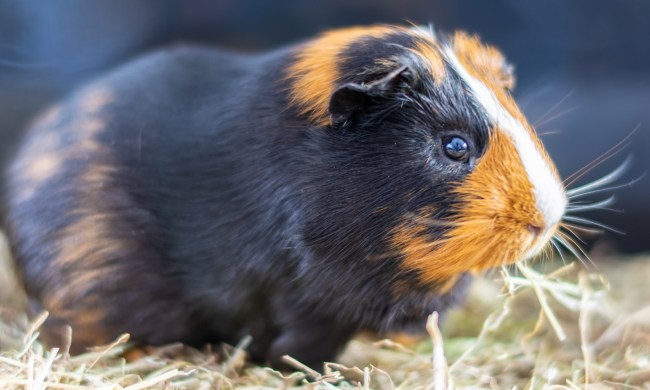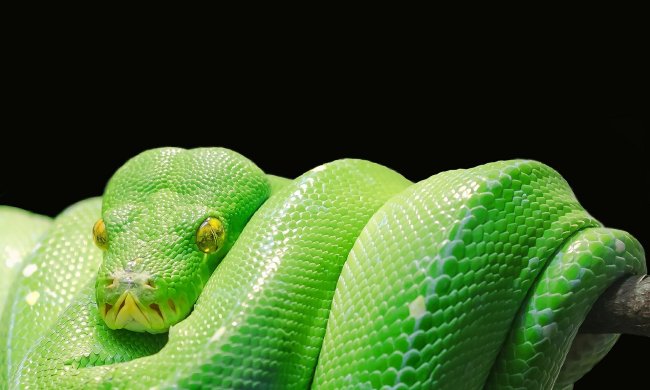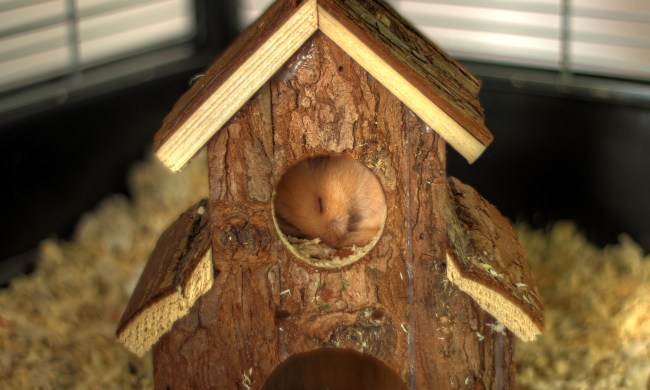Bringing home your hamster should be a joyful experience. Maybe it’s your first pet or the first for your kids. Maybe you know you only have time for a small pet and have leaped into hamster ownership happily. Whether you have just become a pet parent or are used to an animal who does his business outside, you’ll have to get into the cage-cleaning groove.
Don’t let it overwhelm you. Keeping up with the daily, weekly, and monthly tasks means that you’ll never have an all-day job at hand. Here’s how to clean a hamster cage quickly and efficiently.
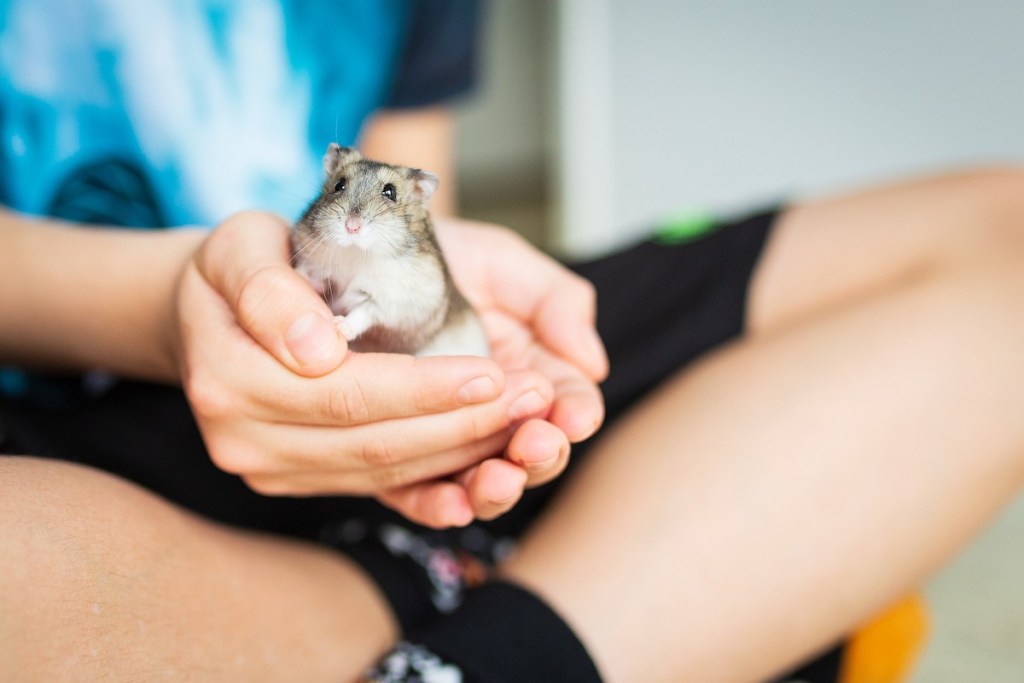
How often do hamsters cages need to be cleaned?
You should really think of cleaning his cage in three steps that take place at different intervals. Every day, scoop out the obvious mess. You may notice that he chooses one spot to relieve himself every day. That’s intentional on his part and can make the daily refresh easier for you. Consider giving your cage a once-over while you or another family member plays with him or just after nightly feeding and treats. It should take only a few minutes and makes a huge difference, especially for the smell.
Every week or so, you’ll take this one step farther and replace the bedding in his cage. While the day-to-day gets out the major issues, you won’t see everything, so the weekly replacement makes sure he’s not sleeping on anything unfortunate. Lastly, every month, you want to run through a deep clean.
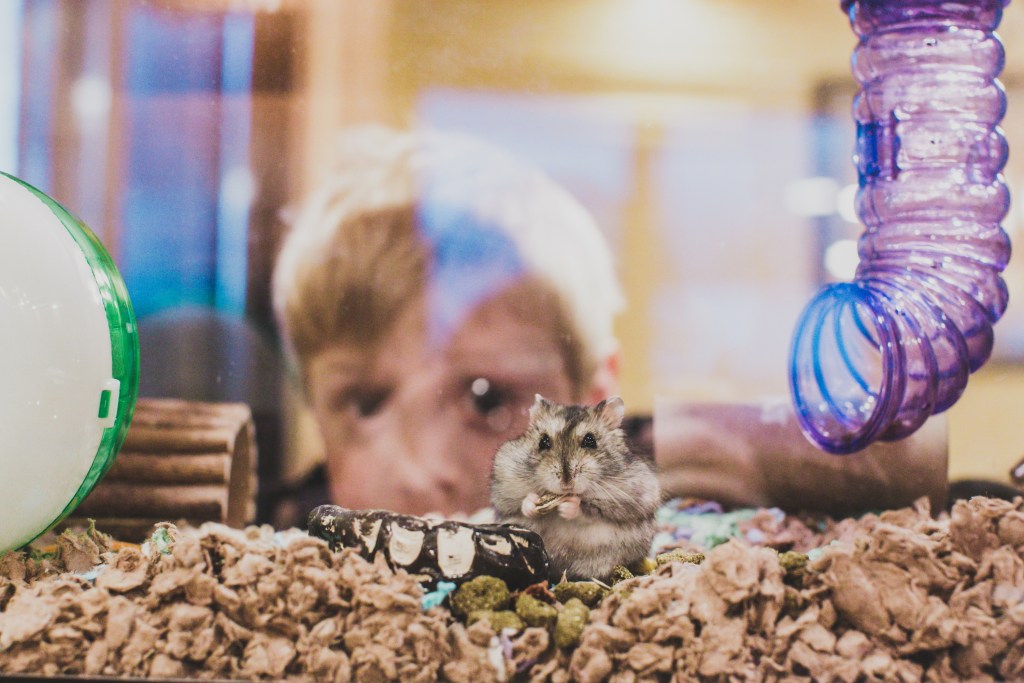
Are hamster cages hard to clean?
If you keep up with maintenance, it should take you only 30 minutes to fully clean the cage. In addition to removing the bedding, you’ll wipe down surfaces, toys, and tubing. If possible, you can take apart the cage and tubes to speed up the whole process. Then the fun begins: Wash and dry every part. Remove all the old food he may have hoarded as well since you don’t want it to go bad after sitting too long. Feel free to leave the items for a final dry while you give your little guy some extra playtime — he’ll love both his clean cage and the extra attention. Lastly, put everything back together and mix things up. This is the perfect time to update his toys or tunnels so he never gets bored.
What can I use to clean my hamster’s cage?
Stay away from the chemicals you would use to clean your own bathroom — glass cleaner is a big no. His home requires a gentler touch. While pet-safe products are available, simple soap and water do the trick. Or use diluted vinegar for a pet-friendly cleanser that you have lying around the house. In addition, you’ll need a washcloth and gloves to protect your hands. If you prefer, you can also stick with dishwashing brushes to get that really good scrub. Finish up your supply list with towels to dry or try a hairdryer (leave it in cool mode, though).
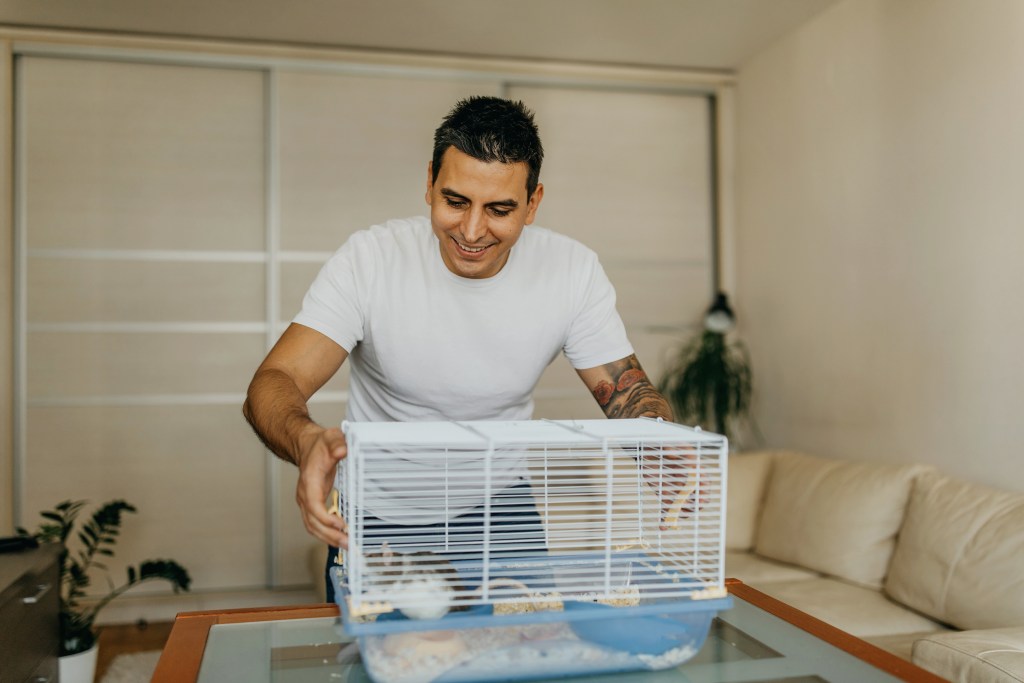
How long can you go without cleaning hamster cages?
All right, let’s get real. We’ve talked about the ideal cleaning schedule, but sometimes life gets away from us. Realistically, you can push your deep clean to about six weeks, provided you diligently scoop out any leavings as quickly as you see them and replace them with new bedding. Also, check out substrate materials that will last longer. Paper seems like a good choice, but it actually soils quickly and stays wet from leftover food and hamster pee. Wood shavings or hay will solve this problem, and he’ll prefer to live in it as well.
As with so many things, cleaning becomes easier if you do it a little at a time. Stick with your daily and weekly chores so you don’t wind up with a huge task and a smelly cage, or worse a sick hamster. Remember that he can fall ill if left in a dirty environment for too long as can the members of your household who interact with him. Frequent cleaning should prevent the smell but look at your air circulation in his room if it seems to linger. A fan might help as long as you keep it away from him and install a thermometer to monitor the temperature.

